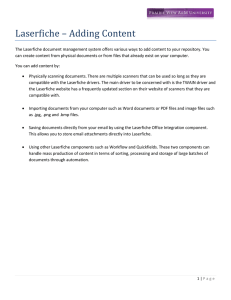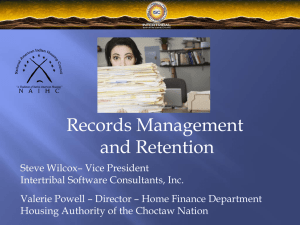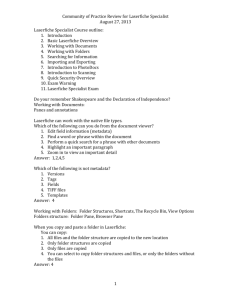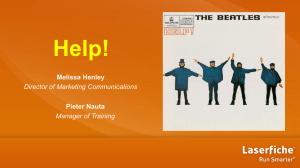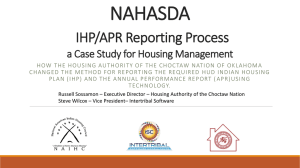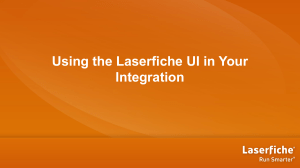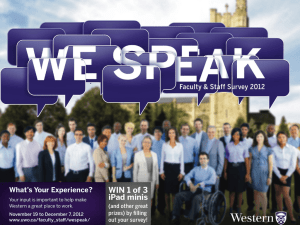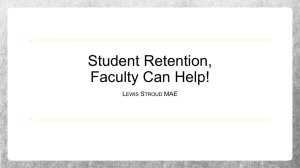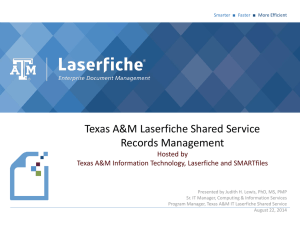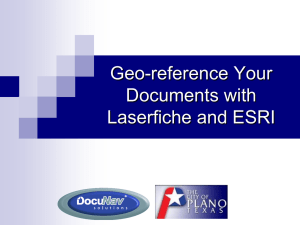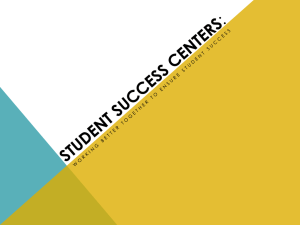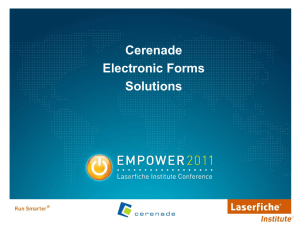ECM
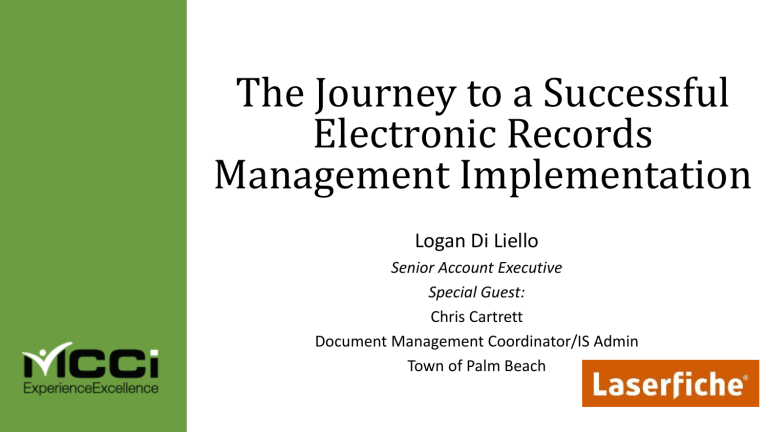
The Journey to a Successful
Electronic Records
Management Implementation
Logan Di Liello
Senior Account Executive
Special Guest:
Chris Cartrett
Document Management Coordinator/IS Admin
Town of Palm Beach
Session
Agenda
Introductions – About Us
Making the Move: Automating Record Mgmt.
Transparent Record Management
Repository Clean-up: Fixing the Mess
Live Demo
Q&A
About me…
About
Us
AWARD WINNING SOLUTIONS & CUSTOMER SERVICE
• Laserfiche Winners Circle since 2003
• Laserfiche Top Government VAR since 2005
• Laserfiche Top VAR since 2008
• More than 500 Clients Nationwide
LASERFICHE TRAINING & SUPPORT
• Creator of Training Center for Laserfiche
• Laserfiche Gold Certified Reseller
SCANNING & INDEXING DEPARTMENT
• Efficient turnaround times
• Quality Controlled Scanning & Indexing
• Experts in Scanning into Laserfiche
• Experts in Handling Confidential Data
TRIVIA!
Who did FSU defeat to win the
2013 National Championship?
DOCUMENT MANAGEMENT VS.
RECORD MANAGEMENT
What’s the difference?
What is Electronic Document Management?
Document management involves the day-to-day capture, storage, modification and sharing of physical and/or digital files within an organization
Reducing lost and misfiled documents
Providing faster search and retrieval of documents
Helping to better organize existing documents
Improving general work processes and organizational efficiency
Reducing the amount of physical space used to store documents, such as file cabinets, boxes and shelving
Record
Retention
What is Electronic Records Management?
Records management establishes policies and standards for maintaining diverse types of records.
Some, but not all, documents within an organization become records.
Identifying what records exist by records inventory
Applying required retention periods to stored items
Determining that a chain of custody and a proper audit trail both exist
Assisting in e-discovery issues and applying legal holds to records when needed
Developing and administering defined records policy and procedures, regardless of if the records are electronic or paper
Preserving records throughout their life cycle
TRIVIA!
What does ECM stand for?
MAKING THE MOVE:
AUTOMATED ELECTRONIC RECORD
RETENTION
Record
Retention
What is an Electronic Record Retention Module
Within your Document Management System
Ability for Record Managers to set up and assign retention properties to records folders
Documents added to these folders, whether by end users or an automated workflow or forms process, will inherit assigned record properties without user intervention
Record folders contain all necessary record retention data; cutoffs, disposition instructions, record series properties, etc…
Record
Retention
Benefits of an Electronic Records Module
Retention policies are pre-determined and assigned at proper levels
Easy to adjust record policy changes at a global level
End users are not making retention decisions
Reduced risk enterprise-wide
Ability to easily search and report on system retention
Audits and reports are available to adhere to predetermined records policies
Record
Retention
Life Cycle & Archival Attributes
Records Management DoD Certified Capabilities
Disposition
Record
Retention
Easily search for records based on a variety of filters
Record
Retention
Once a records folder is available for cutoff, the disposition phase begins
Record
Retention
When eligible for final disposition, destruction button becomes available
Classify:
Record
Retention
Record
Retention
Protects the user from themselves.
Records cannot be purged until they have met the retention process
TRIVIA!
What is the main ingredient of powdered sugar?
IMPLEMENTING TRANSPARENT
RECORD MANAGEMENT
What is Transparent Record Management?
Records managers structure documents within complicated record series that mitigate risk, while general users desire easy access to content types that vary between documents and departments
TRM gives both groups the ability to have their documents structured in a manner which fits their business needs without duplicating records or creating more work for either group
Records added to normal user folders are automatically moved to the proper Record Retention folders and shortcuts are left in the user folders to give continued access
Why Transparent Record Management?
Records managers structure documents within complicated record series that mitigate risk, while general users desire easy access to content types that vary between
Using transparent records management, both records managers and general users are able to organize the same repository in the manner they each prefer, simultaneously.
The process is “transparent” because it enables general users to see through the cumbersome records management layout to the layout of their choice
TRIVIA!
What is my dog’s name?
REPOSITORY CLEAN-UP:
FIXING THE MESS
The Signs
Signs your repository may need to be cleaned up
Users can’t find what they need
Metadata is incorrect or missing
Duplicating data
Users storing data incorrectly
Training complications
Users stop using
Fixing the Mess
Planning
Intuitively broad folder structure
Assessing departmental needs (folders, templates)
What is wrong now, don’t repeat those mistakes
Fixing the Mess
Security
Document creation constraints
Access to pertinent areas
Metadata read-only
Training complications
Fixing the Mess
Training & Ownership
Departmental Liaisons
Comprehensive Training
Ongoing Education
Monthly Meetings
Fixing the Mess
Automate, Automate, AUTOMATE!
Automated Capture
Automated Batch Processing
Workflow for Routing
Helpful
Resources http://www.laserfiche.com/solutionexchange/article/9268 http://www.laserfiche.com/SolutionExchange/Article/best-practices-in-recordsmanagement http://www.laserfiche.com/en-us/business/transparent-records-management http://www.laserfiche.com/ecmblog/article/cluttered-ecm-repository-these-3flowcharts-will-help http://www.laserfiche.com/ECMBlog/Article/5-things-i-wish-id-known-aboutorganizing-my-repository http://www.laserfiche.com/ECMBlog/Article/electronic-records-management-
101-how-to-reduce-risk-and-restore-control http://download.laserfiche.com/public/laserfiche.com/pdf/DocumentManageme ntOverview.pdf
http://www.laserfiche.com/ecmblog/article/cluttered-ecm-repository-these-3flowcharts-will-help
Questions?
Logan Di Liello
Senior Account Executive, MCCi
850-701-0721
Logan@mccinnovations.com
|www.mccinnovations.com
